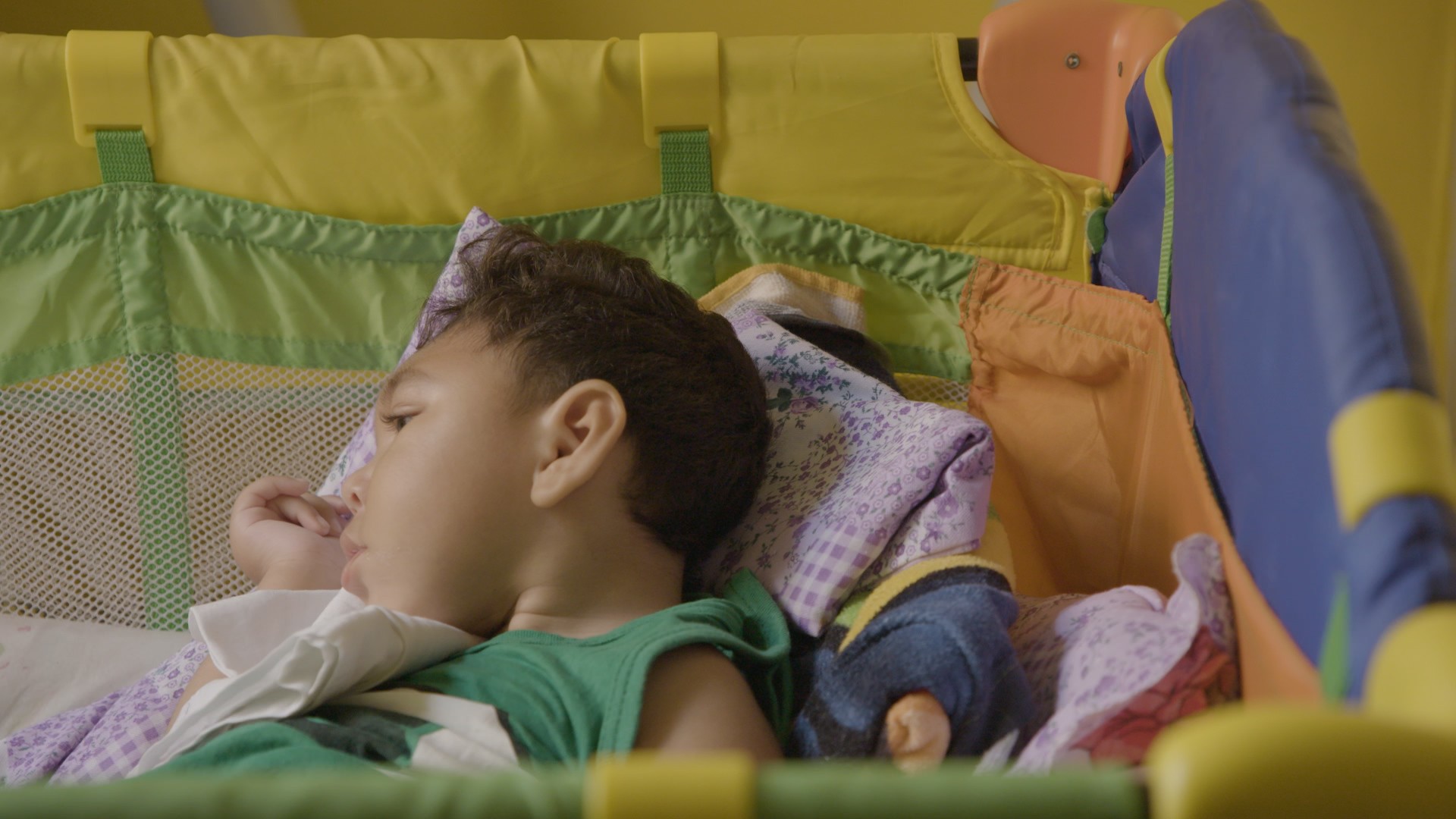Makeshift labs that'll increase COVID-19 testing and house patients with symptoms are springing up in Canada, including one in Montreal’s old Hotel-Dieu Hospital. Ryan Remiorz (CP)
The U.S. is grappling with a boom of new coronavirus cases, which will likely spill over into Canada.Nine governors have declared a state of emergency, including New York and Oregon, as the U.S. grapples with more than 500 cases and 22 deaths as of Monday morning. U.S. officials have come forward to say schools, hospitals, and business should prepare for an onslaught of COVID-19 cases.U.S. President Donald Trump has come under scrutiny for spreading misleading information about the coronavirus, including a statement that health officials would have a vaccine ready shortly. The international community maintains that a vaccine likely won’t be available for 12 to 18 months.Now, U.S. health authorities are struggling to keep up with COVID-19 testing, making it more difficult for the country to manage spread. “If the prevalence of (COVID-19) goes up in the United States, in the country next to us, then there’s potential for it to spread into Canada just by virtue of travel back and forth,” Todd Coleman, an assistant professor of health sciences at Wilfrid Laurier University, told Global News.In fact, several of Canada’s latest cases of the novel coronavirus (COVID-19) can be traced back to U.S. travel. On Friday, Ontario confirmed four new COVID-19 cases, three of which were from the U.S. (The fourth was linked to Iran.) One Toronto man—who rode on the city’s public transit, the TTC, for three days before checking himself into the hospital—likely caught COVID-19 in Las Vegas. An 80-year-old woman from Washington state—the U.S. region with 18 coronavirus-related deaths and the worst outbreak so far—crossed the border into British Columbia to visit her family and is now in critical condition in Vancouver.As of March 9, Canada confirmed nearly 80 cases of the new coronavirus, most of which are in Vancouver and Toronto. On Monday, a patient in B.C. became the first reported Canadian death. Canada’s chief public health officer, Theresa Tam, maintains an outbreak in Canada could happen.“Canada remains focused on containing the spread of COVID19. We are rapidly identifying cases, finding close contacts, and using public health measures like isolation and social distancing,” Tam tweeted on Saturday.Canada is trying to contain spread by ramping up its COVID-19 testing methods and capacity as more cases are confirmed across the country.As of March 6, Canada had tested about 3,000 samples for the coronavirus. Three national labs in Canada have the ability to test for the virus. Ontario and B.C. labs can single-handedly test up to 1,000 cases of the coronavirus every day. That’s compared to the Washington state lab, which could only test 100 cases per day as of last week.Makeshift labs are also springing up in Canada: Montreal’s old Hotel-Dieu Hospital is joining several specialized clinics in Quebec where COVID-19 testing will take place. The former hospital was housing outpatients and administrative offices, but it will soon welcome patients with COVID-19 symptoms.In Canada, virus spread has also slowed because frontline healthcare workers have the authority to request tests at any time. In both countries doctors are expected to test sick patients who can link their illness to foreign travel, specifically to Iran, China, and Italy. After the first community case of COVID-19 appeared in B.C. last week, Ontario and B.C. ramped up their surveillance by increasing tests for anyone with flu-like symptoms.Even before Canada warned against all Iran travel, a B.C. doctor requested a COVID-19 test for an ill patient who had returned from Iran—the doctor’s hunch ultimately led to a positive COVID-19 diagnosis and prevented further spread of the disease, Reuters reported.“We have always said that if a clinician has a concern about somebody and they have symptoms that could be COVID-19, that we would allow that testing,” said B.C.’s health officer Bonnie Henry.Manitoba, Nova Scotia, B.C., and Ontario are automatically testing all patients with severe respiratory illness in intensive-care units for COVID-19.“We’ve tested a lot of people,” Vanessa Allen, the chief of medical microbiology at Public Health Ontario, told the Globe and Mail. “Once there is evidence of community transmission, the demand on testing is going to go up exponentially.”Several experts say Canada learned from the 2003 SARS epidemic. During SARS, the country lacked a coordinated response between governments and testing capacity was limited. Today, provincial, territorial, and federal governments are working together to chase COVID-19 thanks to the country’s public health response plan for biological events. Provincial laboratories have also finessed their ability to test diseases at a large scale, according to the Wall Street Journal.Follow Anya Zoledziowski on Twitter.
“If the prevalence of (COVID-19) goes up in the United States, in the country next to us, then there’s potential for it to spread into Canada just by virtue of travel back and forth,” Todd Coleman, an assistant professor of health sciences at Wilfrid Laurier University, told Global News.In fact, several of Canada’s latest cases of the novel coronavirus (COVID-19) can be traced back to U.S. travel. On Friday, Ontario confirmed four new COVID-19 cases, three of which were from the U.S. (The fourth was linked to Iran.) One Toronto man—who rode on the city’s public transit, the TTC, for three days before checking himself into the hospital—likely caught COVID-19 in Las Vegas. An 80-year-old woman from Washington state—the U.S. region with 18 coronavirus-related deaths and the worst outbreak so far—crossed the border into British Columbia to visit her family and is now in critical condition in Vancouver.As of March 9, Canada confirmed nearly 80 cases of the new coronavirus, most of which are in Vancouver and Toronto. On Monday, a patient in B.C. became the first reported Canadian death. Canada’s chief public health officer, Theresa Tam, maintains an outbreak in Canada could happen.“Canada remains focused on containing the spread of COVID19. We are rapidly identifying cases, finding close contacts, and using public health measures like isolation and social distancing,” Tam tweeted on Saturday.Canada is trying to contain spread by ramping up its COVID-19 testing methods and capacity as more cases are confirmed across the country.As of March 6, Canada had tested about 3,000 samples for the coronavirus. Three national labs in Canada have the ability to test for the virus. Ontario and B.C. labs can single-handedly test up to 1,000 cases of the coronavirus every day. That’s compared to the Washington state lab, which could only test 100 cases per day as of last week.Makeshift labs are also springing up in Canada: Montreal’s old Hotel-Dieu Hospital is joining several specialized clinics in Quebec where COVID-19 testing will take place. The former hospital was housing outpatients and administrative offices, but it will soon welcome patients with COVID-19 symptoms.In Canada, virus spread has also slowed because frontline healthcare workers have the authority to request tests at any time. In both countries doctors are expected to test sick patients who can link their illness to foreign travel, specifically to Iran, China, and Italy. After the first community case of COVID-19 appeared in B.C. last week, Ontario and B.C. ramped up their surveillance by increasing tests for anyone with flu-like symptoms.Even before Canada warned against all Iran travel, a B.C. doctor requested a COVID-19 test for an ill patient who had returned from Iran—the doctor’s hunch ultimately led to a positive COVID-19 diagnosis and prevented further spread of the disease, Reuters reported.“We have always said that if a clinician has a concern about somebody and they have symptoms that could be COVID-19, that we would allow that testing,” said B.C.’s health officer Bonnie Henry.Manitoba, Nova Scotia, B.C., and Ontario are automatically testing all patients with severe respiratory illness in intensive-care units for COVID-19.“We’ve tested a lot of people,” Vanessa Allen, the chief of medical microbiology at Public Health Ontario, told the Globe and Mail. “Once there is evidence of community transmission, the demand on testing is going to go up exponentially.”Several experts say Canada learned from the 2003 SARS epidemic. During SARS, the country lacked a coordinated response between governments and testing capacity was limited. Today, provincial, territorial, and federal governments are working together to chase COVID-19 thanks to the country’s public health response plan for biological events. Provincial laboratories have also finessed their ability to test diseases at a large scale, according to the Wall Street Journal.Follow Anya Zoledziowski on Twitter.
Advertisement

Advertisement
Advertisement
